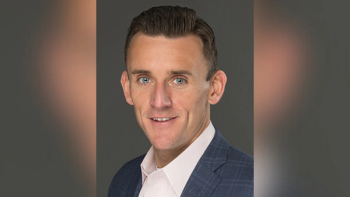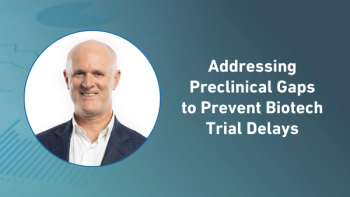
- Applied Clinical Trials-02-01-2025
- Volume 34
- Issue 1
Embracing Change and Intentionally Living ‘a Life of Why’
Tips and best practices for empowering professionals to become change agents in their institutions, including clinical trials.
I was recently invited to deliver a keynote presentation on embracing change. The audience was more than a 100 healthcare improvement and clinical trial professionals who had each committed to participate in a year-long collaborative. The collaborative was designed to empower these professionals to become change agents in their institutions. It launched in January and will culminate next January with participants sharing their change experiences.
I believe that the goal of empowering change agents is as relevant to readers of Applied Clinical Trials as it is to healthcare improvement professionals—you, too, are change agents. So I hope you find value in the following messages and best practices.
I want you to travel back with me, just over 20 years ago, to 2003:
- MySpace launched, beginning the era of social media and the ever-widening reach of social norms.
- Finding Nemo was No. 1 at the box office.
- And fittingly, Mythbusters premiered on Discovery Channel and millions of Americans were exposed to the scientific method for the first time.
I had just completed my second post-doctoral fellowship and had just been hired in my first pharma role.
I got married, bought a new house, renovated our new kitchen, and for the first time, my wife and I hosted our families for Easter dinner. As an Irish catholic kid with 11 aunts and uncles, including several priests and nuns, perhaps you can imagine how Easter, Easter dinner, and the Easter dinner ham were always central family traditions going back generations.
This was our first time being “granted” the McGowan Family Easter Ham Recipe, which I’m told had dated back nearly 70 years.
And here is why I’m telling you this story: The first step in the McGowan Family Easter Ham Recipe was as follows: “Begin by cutting one inch off both sides of the ham.”
Mind you, by this point I had eaten the McGowan Family Easter Ham for nearly 30 years—but I had never prepared it, and that offered me what you might think of as an outsider’s perspective.
When my parents arrived, about two hours before dinner, I asked them if they knew why the recipe began by cutting off the ends of the ham —they claimed they hadn’t thought about it and had never asked.
When my aunts and uncles arrived about an hour before dinner, I asked several of them the same question—they, too, claimed they hadn’t thought about it and had never asked. That was followed by the same reply from my grandparents.
By the time my 90-year-old great grandmother arrived, you might imagine our whole family had been actively coming up with ingenious reasons why the recipe began by cutting off the ends of the ham—and why it was such a critical first step. But now we had the originator of the recipe. So after pouring her first cup of Irish coffee, we asked her the question.
What she said and how we reacted is now part of our family lore.
The reason the first step in the recipe is to begin by cutting one inch off both sides of the ham is that the oven she had in 1940 was only 10 inches wide. The biggest pan she had was only eight inches wide, so the ends had to be cut off the ham, just to fit it into the oven.
She then looked at my grandparents, aunts, uncles, nuns, priests, and my parents and said, “Are you telling me for 70 years you all have been cutting off and wasting the ends of your hams—and not one of you ever asked why?”
Fast vs. slow thinking
I share the Parable of the Easter ham with you because we are surrounded by stories like this. We are surrounded by recipes, and processes, and regulations, and status quo expectations that have never been considered, questioned, or challenged.
This parable is a perfect example of fast thinking vs. slow thinking.
Fast thinking is a version of autopilot; it is without deep reflection, it is without conscious effort, it is where we each spend nearly 90% of our time. In fast thinking mode, our minds are insulated from recognizing the hard questions, let alone trying to wrestle with them. And when confronted with challenges or struggles or failures, fast thinking mode allows us to deflect the consequences—and the lessons.
Slow thinking is more mindful, more logical, more effortful, and can seem infinitely more difficult. Slow thinking means operating from a point of openness—this is what I call living a life of why.
Living a life of why requires you to question status quo, question social norms, and often question authority. I was asked to speak at the recent keynote about change and why change is challenging. I was asked to offer some insights into how we can more intentionally commit to living a life of “asking why?”
As mentioned, it’s far easier living in the status quo—it is how we are wired. Status quo is safer. Even at the core of our physiology, we are creatures of homeostasis, living in a state of balance. But change is all about intentionally breaking these norms, breaking from rituals, breaking from habits, and leading with questions.
Therefore, I offer five tips for embracing change and intentionally living a life of why.
1. Embrace your inner laziness
This might sound counter intuitive, but I’ve stolen this motto from three of my favorite modern day thinkers, Thaler, Gladwell, and Gilbert. Laziness is a superpower you can harness to not waste time, energy, or resources. Admittedly, I am too lazy to spend my days doing things that don’t need to be done, so embracing change is simply a logical way to stop wasting time. Because of my laziness superpower, I am constantly looking for ways to make things easier and to aggressively prioritize high-value tasks. I embrace my allergic reaction to wasting time, and you should, too.
2 Reframe change as a reward
One of the biggest challenges with living 90% of our lives in the comfort of fast thinking is that we often cannot balance long-term benefits against short term efforts; think of the old adage “a moment on the lips, a lifetime on the hips.” What is easier in the present moment, is rarely ever what’s best in the long term.
In cognitive psychology, this is referred to as hyperbolic discounting. Simply put, our brains can’t often do what seems to be pretty logical math; we hyperbolically discount the future.
But once we begin to view change events as a win, a badge, and a success, we increasingly magnify the long-term benefit and more rationally embrace the reward. In other words, once you reframe the outcomes of change efforts as rewards, you’ll more effectively balance the long-term outcome with the short-term burden of the task and you will more effectively leverage the power of your own intrinsic motivation.
3. Go nudge yourself
One of, if not the most powerful behavior change strategy you can ever learn is the power of the nudge. Nudges are small interventions or processes that ensure that the best choice is the easiest choice. If you want to lose weight, replace the junk food in the kitchen with fresh fruits. If you want to increase your savings, auto-enroll into a savings account. And if you want to accelerate change in your organization, surround yourself with a never ending flow of brilliant ideas.
It takes a lot of time and energy to come up with new ideas, ask new questions, and search for new answers; it takes remarkably little time and energy to simply react to ideas and examples that show up on your downstep, or inbox, or social media feeds. And, candidly, it feels awesome to learn something new or find some new way of thinking.
More than 20 years ago I began subscribing to various journal digital table of contents— this was a critical scaffolding in my doctoral training. Eventually, I also set up saved searches on PubMed. More recently I have set up saved searches on Google. I have cultivated a marvelous list of connections and follows on LinkedIn, X, in podcasts and even on Tiktok. As a result of these nudges, on a daily and weekly basis, I am immersed in new perspectives and best practices. Because of the nudges I set up years ago, it is actually harder for me to avoid new ideas today than it is to actively find them.
4. Bundle your actions to (re)build learning and change routines and habits
Think of all the ways you spend your time each day, from walking the dog, doing laundry, exercising, to watching kids practices, to binge watching your programs. These actions comprise the cadence of your life, many becoming daily or weekly routines and some actually becoming habits. Some you do willingly, others you are required to do. Now consider if these actions are meaningful or productive or even enjoyable. My guess is that they run the gamut from things you love to do, things you want to do, and things you have to do.
Another critical lesson from behavioral science is that bundling things you want or love to do with things you have to do simplifies new behaviors and change.
Let me give you one example:
- Every weekday morning for the past seven years I’ve gone on a long walk. I can walk anywhere from four to nine miles a day. I am out of the house well before 6 AM. These walks are now so ingrained in the cadence of my life, I never even give them a second thought. But it wasn’t always that way. When I started, I was largely indifferent to the walks and if I started a walk, I could come up with a dozen reasons to cut it short. But I love non-fiction books, I love deep thinking podcasts, and I loved my Philadelphia sports teams. So I bundled the thing I needed to do, walk, with the things I loved to do, books/podcasts/sports. I got myself some good headphones and now my walks are simply what my legs are doing while my mind is doing what I love.
5. Not everyone needs to be the ‘tip of the spear’
As mentioned earlier, slow thinking is more mindful, more logical, more effortful, and often seems infinitely more difficult. Slow thinking means operating from a point of openness. Living a life of why requires you to question several aspects of the everyday and what’s around us. In a culture where these types of questions and efforts are not expected, being the one who constantly asks the critical questions can be intimidating. But not everyone is obligated to be the tip of the spear.
To be clear, if you lead an organization, you are the tip of the spear. It comes with the territory. Change is your responsibility and so is instilling a culture of learning. So if you are a leader, please focus on tips 1-4. But if you are not yet an organizational leader and you are not inclined to create friction, to push through the chains of status quo, and to question authority, you can always drive change by supporting the movements of others.
There was a famous TED talk from nearly 15 years ago called “How to Start a Movement?” In this talk, Derek Sivers humorously and brilliantly explained that a movement is not the actions of one person, but in fact the actions of the second and third person who rally in support of the cause. In fact, Sivers says it is the first follower that shows others how to follow, and as more people join in, the choice to change becomes increasingly less risky.
If you are not going to be the tip of the spear, then embrace your role as the first or second follower.
In summary, change and innovation come from questioning the status quo and while I started with the Parable of the Easter Ham, I ended by sharing five tips for intentionally living a life of why that I hope will offer value. When you commit to these strategies, slow thinking will increasingly become your default state. Supporting change movements will become part of your professional identity—and you will immediately stand out from generations of those that came before you and failed to ask why.
Brian S. McGowan, PhD, FACEHP, is Chief Learning Officer and Co-Founder, ArcheMedX, Inc.
Articles in this issue
9 months ago
Prioritizing EfficiencyNewsletter
Stay current in clinical research with Applied Clinical Trials, providing expert insights, regulatory updates, and practical strategies for successful clinical trial design and execution.






.png)



.png)



.png)
.png)
